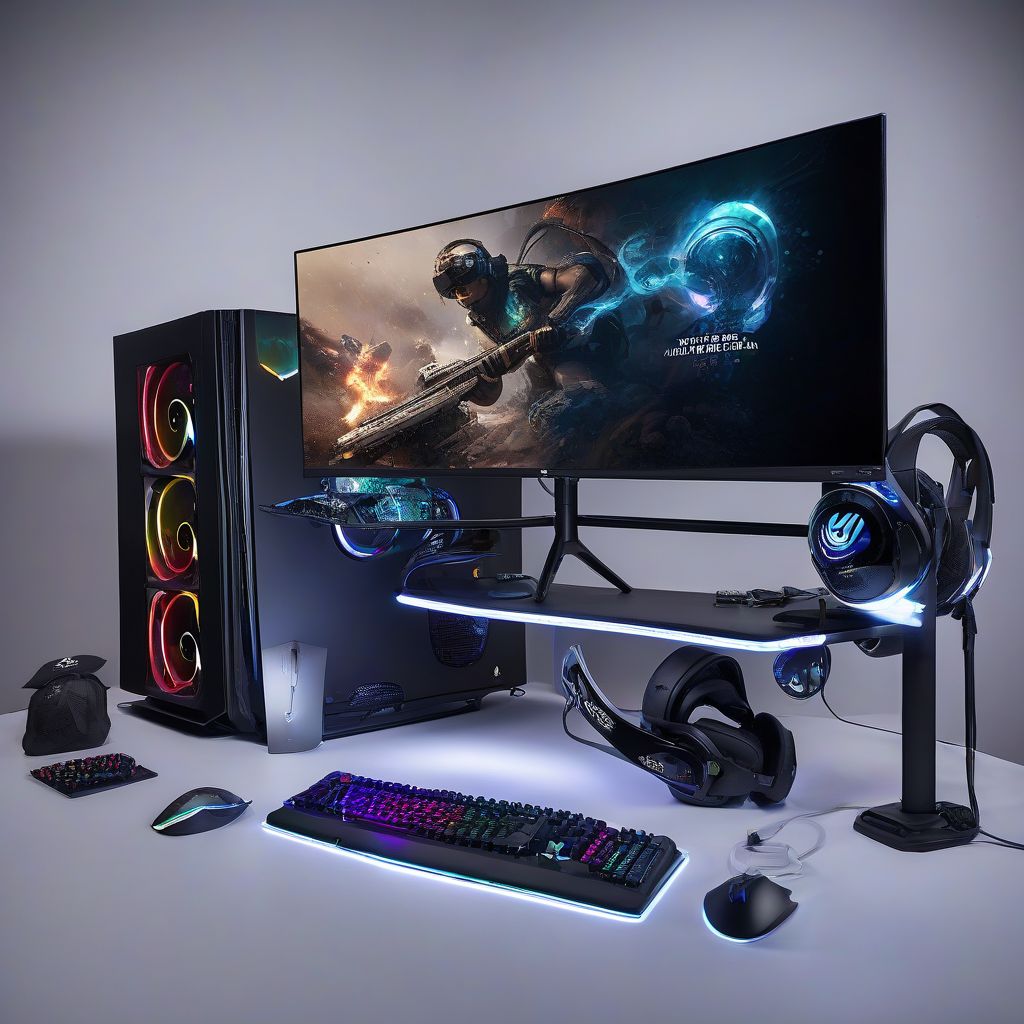Imagine stepping into a world unlike your own, where the boundaries between reality and digital blur. This is the promise of VR gaming, offering immersive experiences that captivate the senses. But to truly unlock the potential of VR and ensure smooth, breathtaking adventures, your PC needs to be up to the task.
Optimizing your PC for VR gaming is like fueling a rocket for launch—it’s all about maximizing performance to reach new heights of immersion. This comprehensive guide will navigate you through every step, ensuring your system is primed and ready to deliver those awe-inspiring VR moments.
Understanding the Demands of VR
Before we dive into optimization, it’s important to understand why VR gaming is so demanding on your system:
- High Frame Rates: VR demands consistently high frame rates (typically 90 frames per second or higher) to maintain a sense of presence and prevent motion sickness.
- Increased Resolution: VR headsets utilize dual displays (one for each eye) with resolutions higher than typical monitors, requiring significant graphical processing power.
- Tracking Data: VR systems track your head and hand movements in real-time, adding to the processing load on your PC.
Meeting the Minimum Requirements: The Foundation
First and foremost, ensure your PC meets the minimum specifications set by your chosen VR headset and games. These are usually available on the manufacturer’s website or the game’s store page. Common requirements include:
- Processor (CPU): A modern multi-core processor, such as an Intel Core i5 or AMD Ryzen 5, or better is ideal.
- Graphics Card (GPU): A dedicated VR-ready graphics card is crucial, with options like NVIDIA GeForce RTX series or AMD Radeon RX series recommended.
- Memory (RAM): 16GB of RAM is generally considered the minimum for a smooth VR experience.
- Operating System: A 64-bit version of Windows 10 or 11 is typically required.
- Ports: Confirm your PC has the necessary ports (DisplayPort, USB 3.0 or higher) to connect your VR headset.
Fine-Tuning Your PC for Optimal Performance
Once the foundation is set, let’s fine-tune your system to unlock its full VR potential:
1. Update Graphics Drivers
Graphics drivers act as translators between your operating system and graphics card. Keeping them updated is crucial for optimal performance, especially in demanding applications like VR games.
- For NVIDIA GPUs: Download and install the latest drivers from the NVIDIA GeForce Experience application or the NVIDIA website.
- For AMD GPUs: Utilize the AMD Radeon Software or visit the AMD website to download the most recent drivers.
2. Adjust In-Game Graphics Settings
Balancing visual fidelity with performance is key in VR gaming. Experiment with in-game graphics settings to find the sweet spot:
- Lower Resolution Scaling: Reducing the resolution scaling slightly can significantly boost performance without drastically impacting visual quality.
- Optimize Texture and Shadow Quality: Lowering these settings can provide a noticeable performance increase.
- Disable Anti-Aliasing (If Necessary): While anti-aliasing smooths out jagged edges, it can be demanding on your system. Consider disabling it or using a less intensive method if needed.
 A high-performance PC setup optimized for VR gaming.
A high-performance PC setup optimized for VR gaming.
3. Close Background Applications
Resource-hungry applications running in the background can steal precious processing power from your VR games. Close any unnecessary programs, especially web browsers, streaming services, and demanding software, before launching your VR experience.
4. Overclocking (For Advanced Users)
Overclocking involves increasing the clock speed of your CPU and/or GPU beyond their factory settings. While this can yield performance gains, it’s crucial to approach it with caution as it can void warranties and potentially damage your hardware if done incorrectly.
5. Optimize Windows for VR
Tweaking Windows settings can also contribute to a smoother VR experience:
- Enable Game Mode: Game Mode in Windows 10 and 11 prioritizes system resources to the active game, potentially boosting performance.
- Adjust Power Options: Set your power plan to “High Performance” to ensure your PC is running at its full potential.
- Disable Unnecessary Startup Programs: Prevent resource-intensive applications from launching automatically at startup to free up system resources.
6. Consider Hardware Upgrades
If your PC is struggling to keep up with your VR ambitions, hardware upgrades might be necessary:
- Graphics Card Upgrade: A more powerful graphics card will be the most impactful upgrade for VR gaming.
- RAM Upgrade: Increasing your RAM to 16GB or even 32GB can provide a smoother multitasking experience and reduce stuttering.
- Storage Upgrade: An NVMe SSD can drastically reduce loading times and improve overall system responsiveness.
Troubleshooting Common VR Performance Issues
Even with a well-optimized PC, you might encounter occasional performance hiccups. Here’s how to troubleshoot some common issues:
- Motion Sickness: If you experience motion sickness, try lowering the in-game graphics settings, ensuring a stable frame rate, and taking breaks frequently.
- Stuttering or Lag: This can indicate insufficient RAM, a bottleneck in your system, or background applications consuming resources. Close unnecessary programs, monitor resource usage, and consider upgrading hardware if necessary.
- Tracking Issues: Ensure your VR headset is properly calibrated, sensors are free from obstructions, and lighting conditions in your play area are adequate.
Beyond Optimization: Enhancing Your VR Setup
Once your PC is running smoothly, consider these additional tips to further elevate your VR experience:
- Room-Scale Setup: Create a dedicated VR play space free from obstacles for a more immersive and comfortable experience.
- Audio Enhancement: Invest in a good pair of headphones or a surround sound system to fully immerse yourself in the audio landscape of your VR games.
- Ergonomic Accessories: Consider accessories like VR covers, wrist straps, or weighted vests to enhance comfort and immersion during extended play sessions.
Conclusion
Optimizing your PC for VR gaming is an ongoing journey of fine-tuning and experimentation. By following the steps outlined in this guide, you can unlock the full potential of your hardware, paving the way for breathtaking VR adventures that blur the lines between reality and the digital realm. Remember to regularly update drivers, monitor system performance, and adapt settings as needed to maintain that seamless and immersive VR experience.
Now that you’re equipped with the knowledge to optimize your PC for VR gaming, what are you waiting for? Dive into those immersive worlds, push the boundaries of reality, and share your experiences in the comments below! Let’s embark on this exciting journey together!
[amazon bestseller=”VR Headset”]
